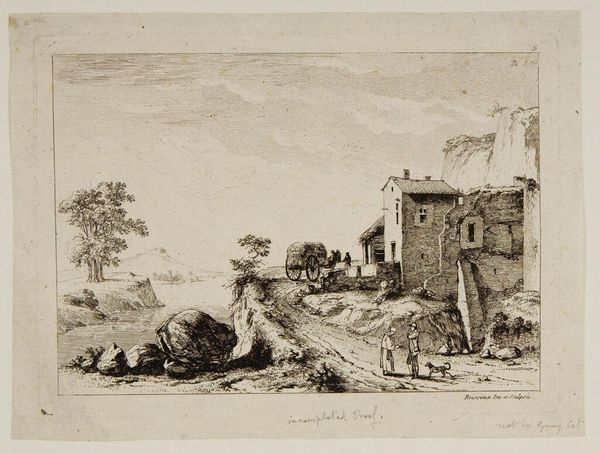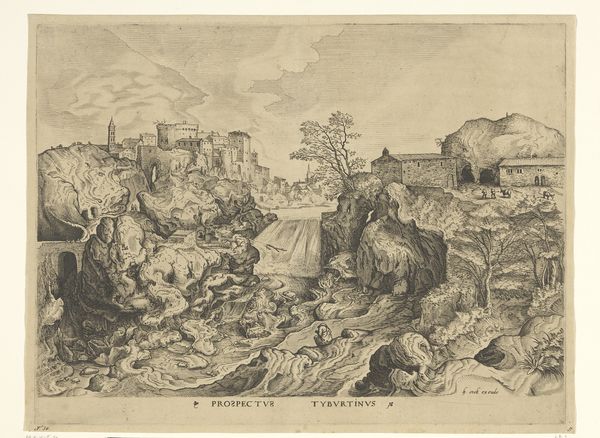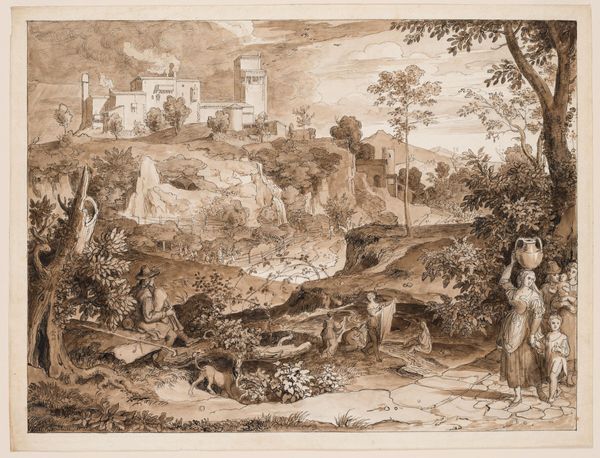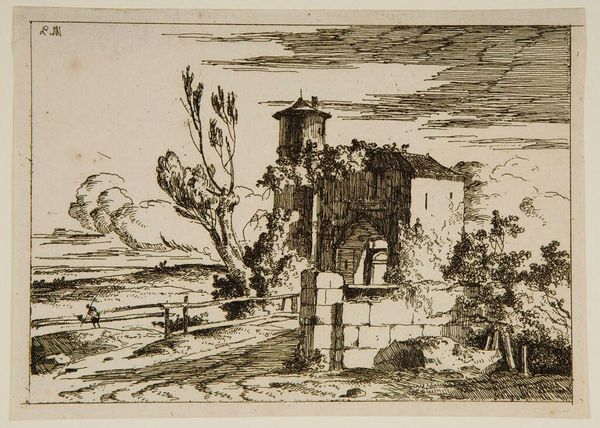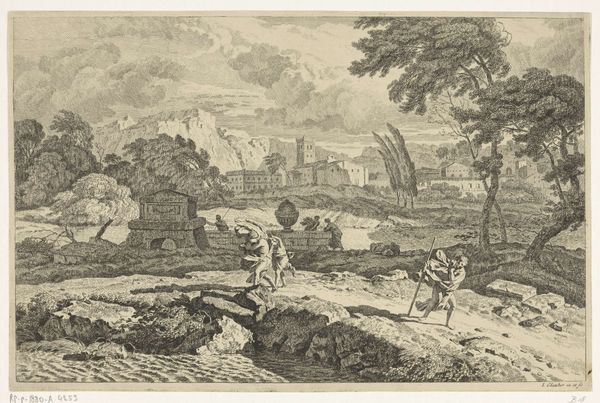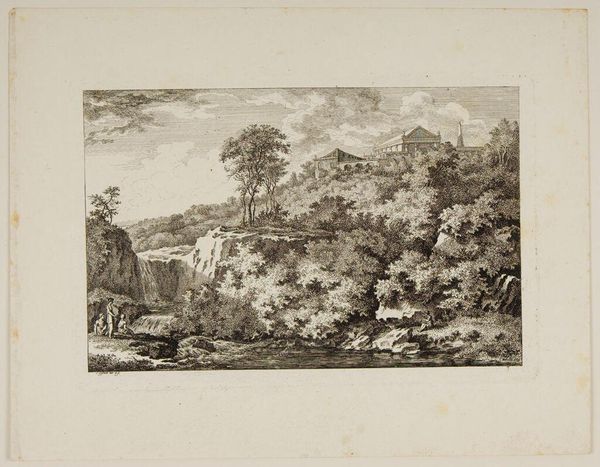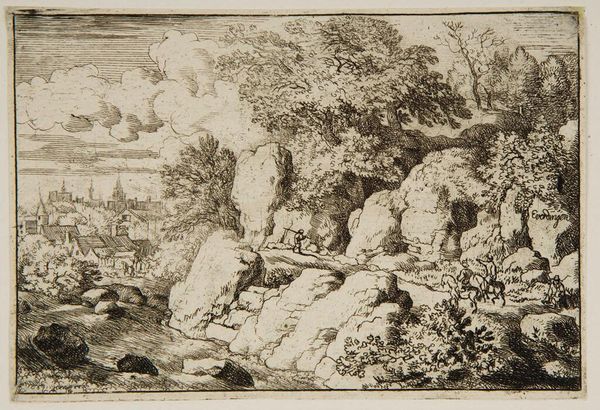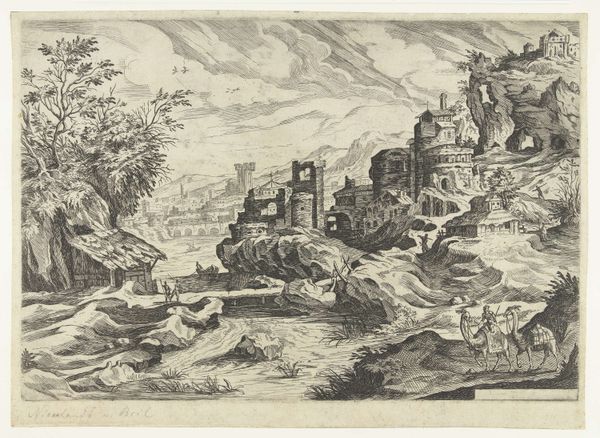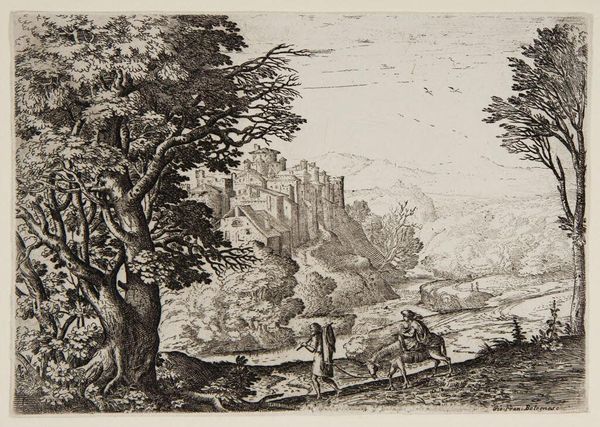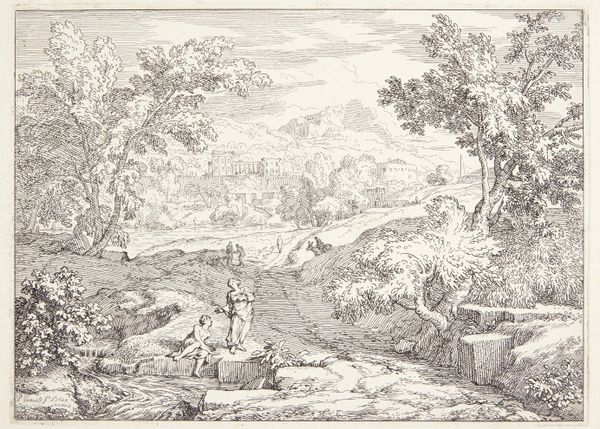
drawing, tempera, print, engraving
#
drawing
#
medieval
#
tempera
# print
#
pen sketch
#
pencil sketch
#
landscape
#
waterfall
#
river
#
mannerism
#
pencil drawing
#
plant
#
pen-ink sketch
#
mountain
#
water
#
cityscape
#
northern-renaissance
#
engraving
Copyright: Public domain
Editor: Here we have Pieter Bruegel the Elder's "View of Tivoli," created around 1556 using engraving. The stark contrast between the chaotic river in the foreground and the distant, almost dreamlike city gives it a very compelling sense of depth. What strikes you about this piece? Curator: I find it interesting how Bruegel, though a Northern Renaissance artist, engages with Italianate themes here. Tivoli was a popular subject for artists traveling to Italy. The question is: What does Bruegel's representation contribute to the artistic dialogue around the Italian landscape, especially considering he's coming from a vastly different socio-political and artistic context? Editor: So, it’s less about a pure depiction and more about a commentary? Curator: Precisely. It prompts us to think about how Bruegel, as a printmaker, would have disseminated such images to a broad audience. This wasn't just about capturing the likeness of a place, but shaping perceptions. The exaggeration of natural forms, for example—the craggy rocks and forceful waterfall—may speak to a Northern European fascination with the sublime and the dramatic qualities of nature. It suggests that art's role goes beyond the picturesque and aims at emotional impact, especially in a culture grappling with religious and political upheaval. Editor: That's fascinating. I hadn't considered the socio-political lens in viewing this landscape. I was caught up in its aesthetic qualities, but you've brought the context to life. Curator: And you've reminded me of how seductive Bruegel's aesthetic still is. The detail he achieved through engraving really is quite astonishing, making the cultural layers all the more poignant.
Comments
No comments
Be the first to comment and join the conversation on the ultimate creative platform.

